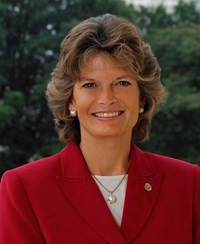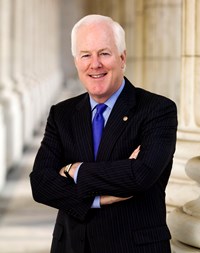CERAWeek '18: Senators Murkowski, Cornyn express broad optimism for U.S. energy
HOUSTON -- During the final day of CERAWeek, Daniel Yergin, vice chairman of conference organizer IHS Markit, sat down with U.S. Senators John Cornyn (R-Texas) and Lisa Murkowski (R-Alaska, chairman of the U.S. Senate Energy and Natural Resources Committee), to discuss what’s ahead in Washington.
Both senators agreed that the American energy industry is moving in a more positive direction. “When you think about where we were last year, and where we are today, it is a world apart,” Murkowski said. “It is a bright new day.”
Cornyn also called it “an exciting time,” as the United States embraces its energy dominance and becomes a more competitive market in the global energy arena. With the Texas unemployment rate down to approximately 4%—which, according to the Texas Workforce Commission, is the lowest rate recorded in four decades—Cornyn said “our economy is taking off.”
However, Murkowski says that Alaska continues to grapple with a higher unemployment rate, but sees the recent success in opening up the Arctic National Wildlife Refuge (ANWR) to oil and gas exploration as an opportunity to boost its economy. “In Alaska, we are still sitting at 7.2% unemployment,” Murkowski said. “Our state is struggling from a revenue perspective. So, the opportunity to do more for the first time, in an area that we believe to have extraordinary resource potential, is quite exciting.”
“Forty years in the making,” she said during Friday’s plenary session. Murkowski, it should be noted, has been an open, decades-long proponent for ending the nearly 40-year ban on oil and gas drilling in ANWR, where there are an estimated 12 Bbbl of resources. She said that although things have progressed, “we’re not done.” Due to ongoing environmental scrutiny and requirements related to permitting, it reportedly could be another ten years before any wells are drilled, and production can begin.
When asked about the potential effects of President Trump’s steel tariffs, Murkowski said that this “is not coming at a good time.” With regard to Alaska’s planned natural gas export terminal, which is expected to be one of the world’s largest natural gas development projects, Murkowski expressed concern that the tariffs could add up to $500 million to an already costly project. As its energy sector grows, the U.S. is seeking to take on some of its biggest and most expensive infrastructure projects. Yet, Murkowski says these tariffs could have a “real impact” on its energy promise.
Both Murkowski and Cornyn asserted that the President should seek better advice on trade, and there needs to be more open communication between Congress and the White House. Cornyn said, “I think a more nuanced approach is called for.”




